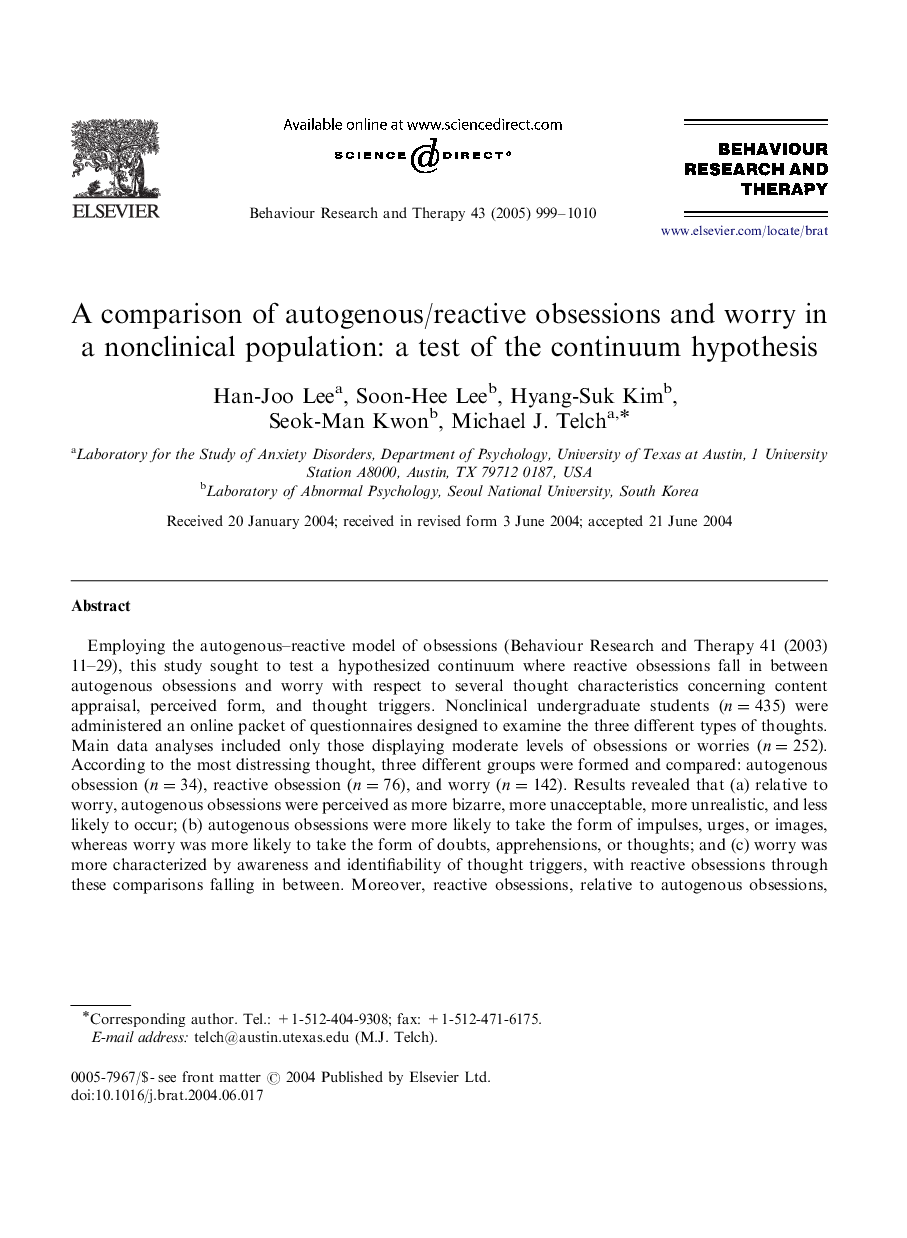| Article ID | Journal | Published Year | Pages | File Type |
|---|---|---|---|---|
| 10445172 | Behaviour Research and Therapy | 2005 | 12 Pages |
Abstract
Employing the autogenous-reactive model of obsessions (Behaviour Research and Therapy 41 (2003) 11-29), this study sought to test a hypothesized continuum where reactive obsessions fall in between autogenous obsessions and worry with respect to several thought characteristics concerning content appraisal, perceived form, and thought triggers. Nonclinical undergraduate students (n=435) were administered an online packet of questionnaires designed to examine the three different types of thoughts. Main data analyses included only those displaying moderate levels of obsessions or worries (n=252). According to the most distressing thought, three different groups were formed and compared: autogenous obsession (n=34), reactive obsession (n=76), and worry (n=142). Results revealed that (a) relative to worry, autogenous obsessions were perceived as more bizarre, more unacceptable, more unrealistic, and less likely to occur; (b) autogenous obsessions were more likely to take the form of impulses, urges, or images, whereas worry was more likely to take the form of doubts, apprehensions, or thoughts; and (c) worry was more characterized by awareness and identifiability of thought triggers, with reactive obsessions through these comparisons falling in between. Moreover, reactive obsessions, relative to autogenous obsessions, were more strongly associated with both severity of worry and use of worrying as a thought control strategy. Our data suggest that the reactive subtype represents more worry-like obsessions compared to the autogenous subtype.
Keywords
Related Topics
Health Sciences
Medicine and Dentistry
Psychiatry and Mental Health
Authors
Han-Joo Lee, Soon-Hee Lee, Hyang-Suk Kim, Seok-Man Kwon, Michael J. Telch,
